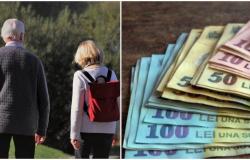
A lot of strange stories make the land of Dacian fortresses in Hunedoara a destination for lovers of the sensational. Retezat, the Castle of the Corvins and the tomb of Arsenie Boca were also not bypassed by controversial, scientifically undocumented theories.
Sarmizegetusa Regia and the tomb of Arsenie Boca gave rise to strange legends. TRUTH
The rush for the sensational and the alleged strange phenomena brought many tourists to Sarmizegetusa Regia, Corvinilor Castle in Hunedoara, in the Retezat Mountains and to the tomb of the monk Arsenie Boca at the Prislop Monastery.
The Romanians made strange gestures to verify the legends
Bizarre stories about the most sought-after places in Hunedoara have been perpetuated over time and, even if they could not be confirmed with scientific arguments, they have won the trust of many Romanians.
Many tourists can be seen walking barefoot in Sarmizegetusa Regia, in the desire to capture the cosmic and telluric energies. One of them surprised the administrators of the archaeological site. New Zealand actor Manu Bennett (video) stripped completely in the middle of a Dacian temple to perform the spiritual Haka dance of the Maori tribes from which it is derived.
“It was one of my brightest and most uplifting moments, being ready to step into an ancient circle of energy and try to reach in time. Maori view the spirits of past ancestors as providing an energy called wairua. I looked at the thunder as the wairua of the ancient Dacians and as the howl of Decebalus”, reported Manu Bennett.
The gestures of the pilgrims who come to the Prislop Monastery, who kiss or touch with various objects the grave cross of the monk Arsenie Boca, convinced of the miraculous power of the so-called “Saint of Transylvania”, have become a common fact. One of the pilgrims tried to convince himself that Arsenie Boca had left his eternal place and was stopped with difficulty after he started digging in the grave (video).
Even the guests of Hațegului forest, who rummaged under the “Throne of the Ancestors” – a large boulder, which is believed to hide writings left by the Dacians – did not surprise anyone (video).
The surroundings of the Corvinor Castle were also explored by many tourists in search of the entrance to the secret tunnel that would connect it to the medieval Deva Citadel.
How legends are born
Hunedoara includes the largest agglomeration of Dacian fortresses in Romania, the places where most Dacian legends originate.
And here are also some of Romania’s well-preserved medieval settlements, which have been associated with troubling and controversial histories, altered along with their transmission over time. And the wild land of the Retezat and the strange shape of the mountains also sparked the imagination of the locals.
“Such sensational stories about certain places in Hunedoara spread because of people’s desire to be proud of the area they come from. Then they became more and more known and accepted as legends even though they are not true”says scientific researcher Daniel I. Iancu, from the Dacian and Roman Civilization Museum in Deva.
Some scientists have also contributed to the perpetuation of false legends, offering controversial arguments without scientific foundations, the researcher adds.
Here are some of the strangest stories about the settlements in Hunedoara, believed by Romanians and researched by scientists:
– The secret tunnel between the Corvinor Castle and the Deva Citadel
Built in the Middle Ages, the Citadel of Deva and the Castle of the Corvins have a history full of legends. In the 19th century, some historians claimed that the medieval fortress of Deva was the royal residence of Decebalus and the place where the Dacian king was buried.
Decebal’s tomb has not been discovered, but the grottoes and entrances to the old mines on the hill of Cetății Deva have given birth to other legends. One of them says that a tunnel was dug between the medieval fortress and the Corvinor Castle, located about 15 kilometers in a straight line, used as a secret communication and defense route.
The secret tunnel would have been dug by the Turkish prisoners of Ioan de Hunedoara – the same ones who would have also dug the well of the castle – and could be used for the movement of the armies defending the two settlements.
The legend, contested by archaeologists, gained momentum after, in the 60s, in the Sânpetru Hill in Hunedoara (video) in the immediate vicinity of Corvinilor Castle, an anti-atomic shelter was excavated, with galleries of about 800 meters and with two entrances in the rock, both currently fenced.
– The underground city that cannot exist at Sarmziegetusa Regia
Sarmizegetusa Regia also sparked the imagination of the Romanians, and some of the guests of the Dacian capital declared themselves convinced that under the archaeological site there would be a vast network of tunnels, dug by the Dacians, and even an underground city spread over dozens of hectares.
“Usually, such accounts are believed by people who have never been to the mountain. At Sarmizegetusa Regia, the mica soil, soft, crumbly, would not allow such tunnels to be dug. This can also be seen in the frequency of landslides in the area“, says researcher Daniel I. Iancu.
No trace of Dacian tunnels was discovered at Sarmizegetusa Regia or in the neighboring settlement of Fețele Albe, both investigated since the early years of the 19th century.
But the research carried out by archaeologists showed that before erecting their massive edifices of limestone, andesite and wood in Sarmizegetusa Regia and Fețele Albe, the Dacians made great efforts to develop the rough terrain of the massif, where the predominant rock was mica schist.
Hundreds of terraces were made by people in the area of the Dacian capital, located at over 1,000 meters above sea level, and the most important of them, supporting the sacred precinct of Sarmizegetusa Regia, were reinforced with strong walls to prevent landslides.
“With the help of the walls, the stability of the huge filling masses of the 9th, 10th and 11th terraces was ensured. Moreover, the three terraces are storeyed and each time the lower terrace is longer than the one above it, so that the supporting wall of the upper terrace simultaneously fulfilled the function of protecting the other one”. pointed out archaeologist Ioan Glodariu.
– The pyramids of Retezat
And Retezat has given rise to some controversial theories, some being inspired by the shape of the Retezat peak (2,482 meters), resembling, from a distance, a pyramid with a truncated top.
Some researchers supported the hypothesis that the peak – formed as a result of glaciation – was actually carved by humans or that it represented a huge energy pyramid, established thousands of years ago by extraterrestrial civilizations.
Other ridges in the Retezat mountains, with similar appearances, have also been viewed as mysterious pyramids.
Tags: secret tunnels Dacians false theories believed Romanians Top controversial legends VIDEO
-




